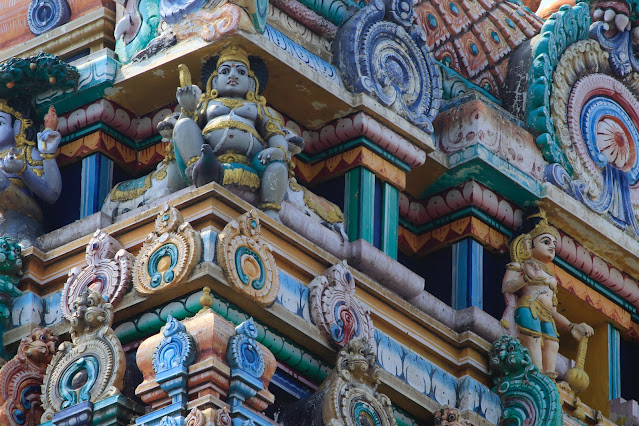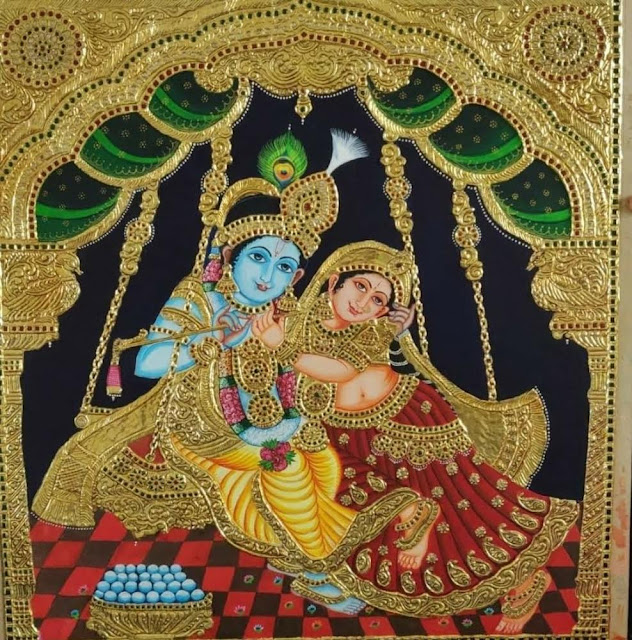Free Flow Of Thoughts : Thyagaraja Pancharatna
THYAGARAJA PANCHARATNA
A Spiritual Journey from Ananda to Brahmmananda
By
R. Ganesan
(302, Amalfi)
A Spiritual Journey from Ananda to Brahmmananda
By
R. Ganesan
(302, Amalfi)
THYAGARAJA PANCHARATNA
A Spiritual Journey from Ananda to Brahmmananda
By
R. Ganesan
(302, Amalfi)
The group-singing of the Ghana Raga Pancharatna kritis of Saint Tyagaraja is the highlight of the Aradhana offerings before his Samadhi at Thiruvayyaru every year. Elsewhere, in several parts of the world, the Aradhana is conducted on similar lines on the same day or later. Some organisations are conducting it monthly throughout the year on the Bahula Panchami Day. What a unique and marvelous way of remembering the great bard of Thiruvayyaru, the outstanding practitioner and votary of Nama Siddhanta through the medium of music!

A Spiritual Journey from Ananda to Brahmmananda
By
R. Ganesan
(302, Amalfi)
The group-singing of the Ghana Raga Pancharatna kritis of Saint Tyagaraja is the highlight of the Aradhana offerings before his Samadhi at Thiruvayyaru every year. Elsewhere, in several parts of the world, the Aradhana is conducted on similar lines on the same day or later. Some organisations are conducting it monthly throughout the year on the Bahula Panchami Day. What a unique and marvelous way of remembering the great bard of Thiruvayyaru, the outstanding practitioner and votary of Nama Siddhanta through the medium of music!

Chorus singing ensures participation by many people, which is the foundation of the Bhajana Sampradaya, and is essentially socialistic in character. It will be very useful always to remember that Thyagaraja was first and used to sing the Todaya Mangalam songs of the Tallappakkam composers at the commencement of his bhajans and conducted unchavritti and chaturmasya bhajans with loving devotion. He also composed the Divyanama Sankirtanas, Utsava Sampradaya kirtanas, etc.
Of the many group-kritis, which are also called Pancharatna, only the Ghana Raga Pancharatna are mandatory in the Aradhana. What is so special and great about these Pancharatna kritis?
For one thing, even though they are quite complex in form and content, they are learnt as easily as one learns the Varnas because of their structural similarity. The rhythm in them is so captivating and the tunes so lilting that even the uninitiated are naturally attracted to them.
The first Ratna begins joyfully with an offering of hearty praise to the Creator who is the ‘Bestower of Ananda’ (Jagat Anandakaraka). The joyous mood pervades the entire length of the song through a delectable string of the choicest ‘Namavalis’, in which the myriad Names of the Lord flow in a tuneful single stream of bhakti.
In the second Ratna, there is a dramatic and stunning change of mood from joy to melancholy, where the Saint condemns himself as the worst sinner (Dudugukala nannu ye Dorakoduku brochura?), wondering if even God could save him.
In the third Ratna, there is once more a mood-shift and this time it is a delightful satire in which the ‘stubbornness’ of God is taken up for a fascinating Nindastuti (Saadhinchene).
The mood of the fourth Ratna (Kana Kana Ruchira) is one of ecstasy, the bhakta having had the darshan of the Lord. Logically, the Saint should have stopped here, for what more does he need? But Thyagaraja does not, for he knows that logic is dragging deadweight in Bhakti Yoga. Therefore, he transcends logic to move on to the fifth Ratna, in which alone he attains fulfilment by falling at the feet of ‘Endaro Mahanubhavulu’, the experiencers of the Bliss of seeing God in their lotus-like hearts (Brahmmanandam anubhavinchevaaru). Poor God is nearly sidelined, and the Bhakta is put on the highest pedestal! The saint is an adept in taking such liberties with his Lord.
Thus, what begins with Ananda in the first song soars up to the apex point of Brahmmananda in the last one. And, between the two, what great poetry, music, and divinity! It is from fullness to wholesomeness, from joy to bliss and from the almighty Lord to his great devotee!
In these five gems, as in a great many of his other compositions, Thyagaraja’s camera eye of the mind presents, on the canvas of supreme music, crystal clear ‘visuals’ spanning the three dimensions of Life, Philosophy and Poetry as well as human conduct and morality. His unsurpassable erudition, no doubt, has its brilliant and vibrant echo in the music. But ultimately, it is his lifelong and unrelenting Tapasya as a devout and self-effacing Bhakta that stands out as the most significant and enduring feature of his sahitya.
Maybe, overwhelmed and awe-struck by the dazzling beauties of the seer-saint’s extraordinary music and rhythm, we tend to overlook the sahitya and their meaning. Surely, the Sadguru would not have wanted it that way.
(The author is a writer, musician and music teacher)



Comments
Post a Comment